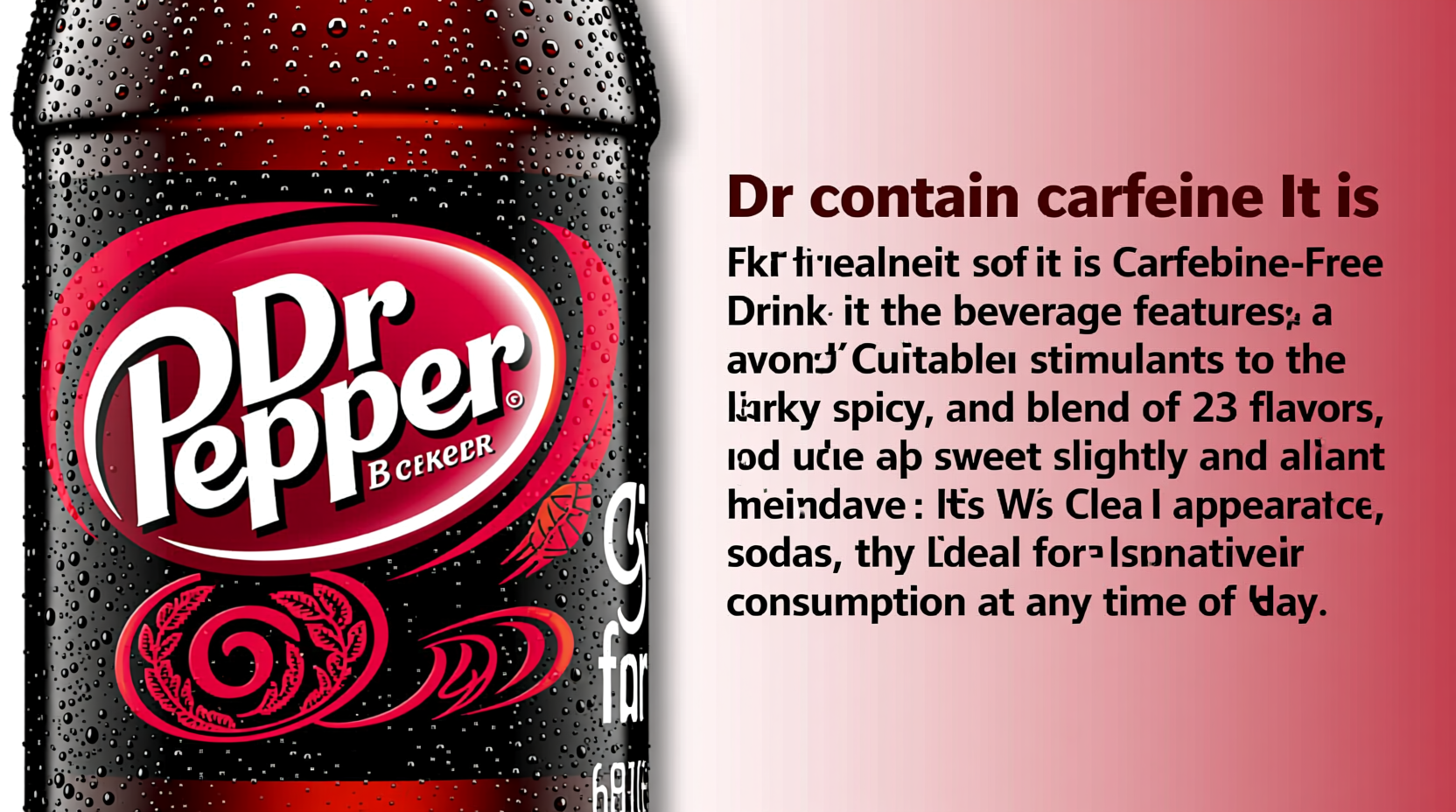Quick Facts: Dr Pepper Caffeine Content at a Glance
Before diving deeper, here's what you need to know immediately about Dr Pepper and caffeine:
- ✅ Contains caffeine: Yes, standard Dr Pepper has caffeine
- 📊 Amount: 41 mg per 12 fl oz (355 ml) can
- 🔄 Caffeine-free option: Dr Pepper offers a caffeine-free version
- ⚖️ Compared to coffee: About half the caffeine of a standard cup of brewed coffee
- 🥤 Per serving: Caffeine content scales proportionally with serving size
Official Caffeine Content in Dr Pepper
According to the official Dr Pepper nutrition facts, a standard 12-ounce (355 ml) serving of Dr Pepper contains 41 milligrams of caffeine. This places it in the middle range compared to other popular carbonated beverages.
The caffeine content remains consistent across most standard Dr Pepper products, including the classic 12-ounce cans, 20-ounce bottles, and fountain servings. However, the company does offer a caffeine-free version of Dr Pepper for those who prefer to avoid caffeine entirely.
| Beverage | Caffeine (per 12 fl oz) | Compared to Dr Pepper |
|---|---|---|
| Dr Pepper | 41 mg | Baseline |
| Coca-Cola | 34 mg | 17% less |
| Pepsi | 38 mg | 7% less |
| Mountain Dew | 54 mg | 32% more |
| Barq's Root Beer | 22 mg | 46% less |
| Brewed Coffee | 95-200 mg | 2.3-4.9x more |
How Dr Pepper's Caffeine Content Has Evolved
Dr Pepper's caffeine content hasn't always been consistent throughout its history. Understanding this timeline helps explain why some people might have conflicting information:
- 1885-1950s: Original formula contained varying amounts of caffeine from natural sources like kola nuts
- 1960s-1980s: Standardized caffeine content as production methods became more consistent
- 1990s: Introduction of caffeine-free Dr Pepper to meet consumer demand
- 2000s-present: Current standardized caffeine content of 41 mg per 12 fl oz serving
This historical context explains why some older relatives might tell you Dr Pepper "never had caffeine" — they may be remembering the caffeine-free version or earlier formulations with less consistent caffeine levels.

Understanding Caffeine Sensitivity and Individual Responses
While 41 mg of caffeine might seem modest, individual responses to caffeine vary significantly based on several factors:
- Body weight: Effects are more pronounced in smaller individuals
- Genetic factors: Some people metabolize caffeine more slowly than others
- Tolerance: Regular caffeine consumers develop tolerance over time
- Time of day: Effects are more noticeable when consumed later in the day
- Other ingredients: The sugar content in Dr Pepper can enhance perceived energy effects
According to research published by the U.S. Food and Drug Administration, moderate caffeine consumption (up to 400 mg daily for healthy adults) is generally considered safe. A single serving of Dr Pepper falls well below this threshold.
Health Considerations for Dr Pepper Consumers
When evaluating whether Dr Pepper's caffeine content matters for your health, consider these evidence-based points:
- For most healthy adults, the caffeine in one Dr Pepper poses no significant health risks
- Children and adolescents should limit caffeine intake — the American Heart Association recommends children avoid added caffeine
- Pregnant women should monitor total daily caffeine intake from all sources
- People with certain heart conditions may need to limit caffeine consumption
- The sugar content (40g per 12oz) in regular Dr Pepper often presents greater health concerns than the caffeine for most consumers
Common Misconceptions About Dr Pepper and Caffeine
Several myths persist about Dr Pepper's caffeine content. Let's clarify the facts:
- Myth: "Dr Pepper has more caffeine than coffee" Fact: A standard cup of coffee contains 95-200 mg of caffeine — more than double Dr Pepper's 41 mg per serving
- Myth: "All root beers contain caffeine" Fact: Most root beers (like A&W and Barq's) contain little to no caffeine, though Barq's is an exception with 22 mg per serving
- Myth: "Caffeine-free Dr Pepper tastes completely different" Fact: The caffeine-free version maintains the same 23-flavor profile — most consumers can't tell the difference in blind taste tests
- Myth: "Dr Pepper's '10 2 4' slogan refers to caffeine content" Fact: The slogan originally referred to optimal drinking times (10am, 2pm, 4pm), not caffeine measurements
Reading Labels to Identify Caffeine Content
When checking if your Dr Pepper contains caffeine, look for these indicators:
- Product name: "Caffeine-Free Dr Pepper" will be clearly labeled on the front
- Nutrition facts panel: Caffeine content is listed under "Total Sugars" section
- Ingredient list: Caffeine will appear in the ingredients if present
- Can color: Caffeine-free versions sometimes have different color schemes (check your region)
When in doubt, the most reliable method is checking the official Dr Pepper nutrition information online, which provides current, accurate data for all their products.
Practical Guidance for Caffeine-Conscious Consumers
Based on your specific needs, here's how to approach Dr Pepper consumption:
- If avoiding caffeine completely: Choose "Caffeine-Free Dr Pepper" and verify on the label
- If monitoring caffeine intake: Count Dr Pepper's 41 mg toward your daily total
- If sensitive to caffeine: Consider smaller serving sizes or consuming earlier in the day
- If concerned about children's consumption: The caffeine-free version eliminates this concern
- If comparing energy effects: Remember that sugar content also contributes to perceived energy boost











 浙公网安备
33010002000092号
浙公网安备
33010002000092号 浙B2-20120091-4
浙B2-20120091-4